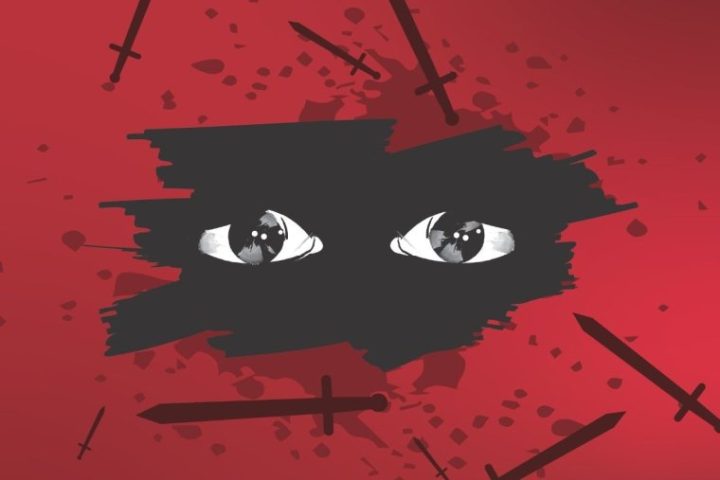by McKenzie Snellgrove
Many people inside the theatre community and out know about the curse of The Scottish Play. For centuries, the curse has been a looming ghost in western theatre, waiting to doom unsuspecting productions that utter the famous word or perform the cursed play. No self-respecting thespian would dare to speak the name of the bloody king in fear of what would follow: lights falling on actors, brakes on wheel-on-sets failing, or the dreaded sickness right before opening night. Ask anyone who has been doing theatre for long enough and they will tell you their own encounter with the curse. For this theatre nerd turned journalist, it was a middle school production of HONK Jr that ended up opening with a terrible thunderstorm, flickering lights, and two missing actors. But this is not a story about the curse of the Scottish King, no. This is a frightening tale of mysterious disappearances, hauntings, and death lurking in the shadows of the Centre College Theatre Department.
When classes started back this fall, students were eager to get back to campus, see their friends, and get back into the swing of college life. However, among the students returning to campus, none were more excited for the fall semester than the students of the theatre department, who had something big to look forward to—a play that actors, technicians, and theatre-goers alike all dream of…Hamlet. The process started off normal enough. The actors were learning their lines, the production crew was designing the show, the director was planning the blocking, it was smooth sailing all around…until the first rehearsal.
According to one cast member, the first rehearsal was “a disaster of terrifying proportions that could only be attributed to occult forces.” They cited multiple falls from actors, the sudden shattering of the ghostlight, and the unfortunate trajectory of a pointed rehearsal prop into the director’s eye. The group left rehearsal that night with hearts full of terror and an instinct to never return. But, as they say, the show must go on. The show continued to rehearse, amassing more and more injuries, near-fatal accidents, and strange occurrences. Rosencrantz and Guildenstern tripped and sprained both their wrists walking across the stage. King Claudius was hit in the eye by an unidentified paper airplane and now has a scratched cornea. Hamlet himself claimed to hear someone calling him from the hallway and then disappeared for 5 hours. Eventually someone found him wandering near the clock tower, where he was reported to be walking expressionless in a circle whispering “to be or not to be” over and over. While no one has been able to make sense of these strange happenings, investigative reporters of the Cento went undercover at one of the rehearsals to try to understand what exactly was happening. Some even blamed the actual ghost of King Hamlet, played by Lauren Radeker, who claimed “it’s none of their business” whether or not she is communing with unknown spirits or getting too into character. However, she denies all claims of method acting, which is, in her opinion, “for chumps.”
The rehearsal room was tight with tension, everyone waiting for the next suspicious accident to take place. As Ophelia began to sing, our reporters noticed a haunting melody accompanying her that seemed to be surrounding the stage. Maybe it was just a background track, they assumed. Well, as they found out, the strange song was coming from the speakers surrounding the stage, but when they asked who turned it on, the stage manager said no one had touched it. Upon further investigation, the track wasn’t even recorded as part of the sound design for the show. No one could tell what it was or where it had come from. As the music faded away, a sudden and loud noise rang out, echoing across the space. Queen Gertrude had been rehearsing her monologue when the stage beneath her gave way and sent her plummeting down into the caverns below the Weisiger stage. Everyone crowded around the dark pit, fearfully watching and waiting for her to emerge. A gloved hand reached out of the splintered wood, grasping one of our reporter’s legs and dragging him down with her. According to footage from his camera, he landed in an unfamiliar hallway, one that strangely resembles a theatrical version of the New Quad tunnels. The concrete walls were covered in photos of old Centre students performing Shakespeare on stage, rusted lights, banged up stage props, and cobweb-covered comedy and tragedy masks. The ground was spotted with unknown brown and red puddles, along with splattered stains that seem to be either blood or semen. Our reporter advances, pointing the camera towards the end of the tunnel where a tiny pinprick of light glows red. Suddenly, he whips around to see Queen Gertrude holding a large prop skull above her head before bringing it down on the camera. The footage ends there.
So what are we meant to make of these events? At the next rehearsal, all actors and technicians were present and accounted for, ready to continue working on the show. The stage appeared just as it had before, with no trace of any broken wood or dark tunnels beneath the stage. Our camera was found completely intact in the black box on the fifth floor, but our reporter was nowhere to be found. Perhaps the sacrifice was enough to allow the play to be performed as planned, or maybe this is simply a moment of calm before the storm of tech week. It remains to be seen. So keep your eyes peeled when Hamlet performs November 13-16 in Weisiger Theatre, for you may see echoes of the mysterious curse of Hamlet and all the horrifying events that led to opening night.

